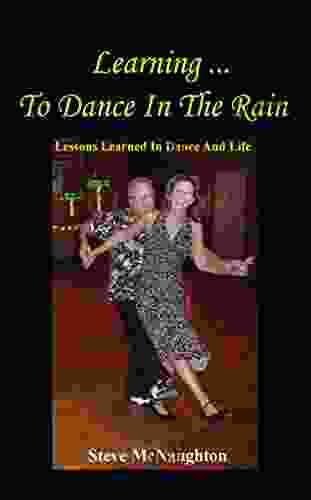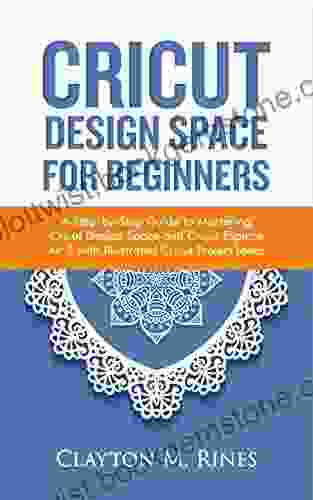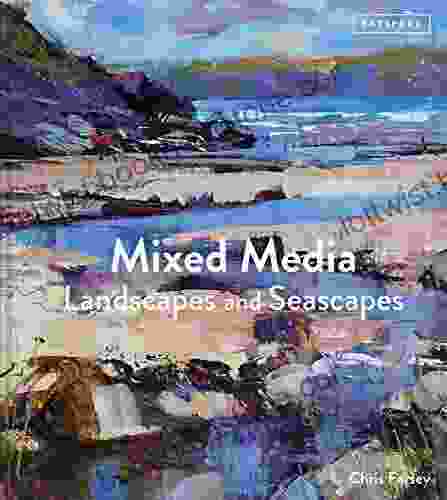Anatomical Diagrams for Art Students: A Comprehensive Guide to Human Anatomy for Artists

For aspiring and professional artists alike, mastering the human form is an essential foundation for creating realistic and captivating artwork. Anatomical diagrams serve as invaluable tools in this endeavor, providing detailed visual representations of the human body and its intricate structure. In this article, we delve into the world of anatomical diagrams and explore their significance for art students. From the history and evolution of anatomical art to the various types of diagrams available, this comprehensive guide will empower artists with the knowledge and resources they need to elevate their understanding of human anatomy and enhance their artistic skills.
Historical Evolution of Anatomical Diagrams in Art
The study of human anatomy has been intertwined with art for centuries, with early artists relying on observations of living models and cadavers to depict the human form. However, the development of anatomical diagrams marked a significant turning point in art education. The first known anatomical diagrams were created by the ancient Greeks in the 5th century BC, with notable contributions from Hippocrates, Aristotle, and Galen. These early diagrams focused on the skeletal and muscular systems, providing a rudimentary understanding of human anatomy.
4.4 out of 5
| Language | : | English |
| File size | : | 26290 KB |
| Text-to-Speech | : | Enabled |
| Screen Reader | : | Supported |
| Enhanced typesetting | : | Enabled |
| Print length | : | 82 pages |
| Lending | : | Enabled |
During the Renaissance period, artists such as Leonardo da Vinci and Michelangelo conducted extensive anatomical studies, dissecting human bodies to gain a deeper understanding of their structure. Their detailed anatomical drawings, often accompanied by written notes, revolutionized the depiction of the human form in art, introducing a level of realism and accuracy that had never been achieved before.
The publication of Andreas Vesalius's "De Humani Corporis Fabrica" (On the Fabric of the Human Body) in 1543 marked a major milestone in anatomical illustration. Vesalius's groundbreaking work featured meticulously detailed engravings based on his own dissections, providing a comprehensive and accurate representation of the human body. This publication had a profound impact on both medical and artistic communities, establishing a new standard for anatomical accuracy.
Types of Anatomical Diagrams for Art Students
Today, a wide range of anatomical diagrams is available to art students, each serving a specific purpose and offering varying levels of detail. The most common types include:
1. Skeletal Diagrams: These diagrams focus on the bones of the human body, providing a comprehensive view of their size, shape, and articulation. They are essential for understanding the skeletal framework that supports the body and forms the basis for movement.
2. Muscular Diagrams: Muscular diagrams depict the muscles of the human body, including their origin, insertion, and function. They are invaluable for artists who wish to accurately portray the human form in motion and depict the subtle nuances of muscle movement.
3. Cross-Sectional Diagrams: Cross-sectional diagrams provide a detailed view of the human body by slicing through different anatomical planes. They reveal the internal structures, organs, and tissues, offering a comprehensive understanding of the body's three-dimensional form.
4. Dynamic Diagrams: Dynamic diagrams capture the human body in motion, showing how muscles and bones work together to produce movement. They are particularly useful for artists who want to depict dynamic poses and convey a sense of action in their artwork.
5. Surface Anatomy Diagrams: Surface anatomy diagrams show the external features of the human body, including skin, muscles, and veins. They are helpful for artists who need to accurately depict the human form in various poses and lighting conditions.
Benefits of Using Anatomical Diagrams for Art Students
1. Improved Understanding of Human Anatomy: Anatomical diagrams provide a clear and concise representation of the human body, making it easier for art students to understand its structure and function. By studying these diagrams, students can gain a thorough knowledge of the skeletal, muscular, and internal systems, which is essential for creating realistic and anatomically accurate artwork.
2. Enhanced Depiction of Form and Movement: Anatomical diagrams help artists to accurately depict the human form in various poses and movements. By understanding the underlying anatomical structure, students can avoid common mistakes and create artwork that is anatomically sound and visually appealing.
3. Informed Artistic Decisions: Anatomical diagrams empower artists to make informed decisions about their artwork. By understanding the anatomy of the human body, artists can create poses and gestures that convey specific emotions and narratives. They can also use anatomical knowledge to enhance the realism and impact of their artwork.
4. Inspiration and Reference: Anatomical diagrams serve as a valuable source of inspiration and reference for artists. They can spark ideas for new artworks and provide a visual guide for depicting the human form in different contexts.
5. Bridge Between Science and Art: Anatomical diagrams bridge the gap between science and art, allowing artists to incorporate scientific knowledge into their creative practice. By studying anatomy, artists can create artwork that not only captures the beauty of the human form but also reflects a deep understanding of its function and complexity.
Anatomical diagrams are indispensable tools for art students who seek to master the human form and create realistic and captivating artwork. From providing a comprehensive understanding of human anatomy to enhancing the depiction of form and movement, these diagrams empower artists with the knowledge and resources they need to elevate their artistic skills. As students delve into the world of anatomical diagrams, they not only gain a deeper appreciation of the human body but also unlock the potential to create artwork that resonates with viewers at a profound level.
4.4 out of 5
| Language | : | English |
| File size | : | 26290 KB |
| Text-to-Speech | : | Enabled |
| Screen Reader | : | Supported |
| Enhanced typesetting | : | Enabled |
| Print length | : | 82 pages |
| Lending | : | Enabled |
Do you want to contribute by writing guest posts on this blog?
Please contact us and send us a resume of previous articles that you have written.
 Best Book
Best Book Page Flip
Page Flip Bookshelf
Bookshelf Literary loom
Literary loom Chapter
Chapter Bookish
Bookish PageTurner
PageTurner Bibliophile
Bibliophile Story
Story Inkwell
Inkwell Bookworm
Bookworm Labyrinth
Labyrinth Plot Twist
Plot Twist Prose
Prose Paperback
Paperback Storyteller
Storyteller Sanctuary
Sanctuary Fiction
Fiction Reading
Reading Chronicle
Chronicle Read
Read Robin Hemley
Robin Hemley Elliott J Gorn
Elliott J Gorn Kenneth Conibear
Kenneth Conibear Daniel J Boorstin
Daniel J Boorstin Katie Piper
Katie Piper Henry Porter
Henry Porter Olan Thorensen
Olan Thorensen Chris Wilson
Chris Wilson George Orwell
George Orwell Gilad Segev
Gilad Segev Vince Flynn
Vince Flynn Nick Paparone
Nick Paparone Laura Stanton
Laura Stanton Soyeung Koh
Soyeung Koh Jeff Frazier
Jeff Frazier Paul Austin Ardoin
Paul Austin Ardoin Claire Chao
Claire Chao Jonh Craft
Jonh Craft Richard Erdoes
Richard Erdoes Chris Mcmorran
Chris Mcmorran Gavin Francis
Gavin Francis Frank Langfitt
Frank Langfitt Mark Bergin
Mark Bergin Ruth Grace David
Ruth Grace David Edmund De Waal
Edmund De Waal John Ringo
John Ringo David Housewright
David Housewright Robin Cormack
Robin Cormack Clara Kramer
Clara Kramer Robert Rath
Robert Rath Kanoe Kaye
Kanoe Kaye Cynthia Helms
Cynthia Helms Stacy Thomas
Stacy Thomas Matthew O Duncan
Matthew O Duncan Eden Redd
Eden Redd Myron Howard Nadel
Myron Howard Nadel Charlie English
Charlie English Clarence Boulay
Clarence Boulay Stuart Ross
Stuart Ross Patricia Weiss Levy
Patricia Weiss Levy Nicholas Sammond
Nicholas Sammond Gayle Roehm
Gayle Roehm Victor Silvester
Victor Silvester Patricia Coenjaerts
Patricia Coenjaerts Danielle Evans
Danielle Evans Sean Adams
Sean Adams Felicia P Roche
Felicia P Roche India T Norfleet
India T Norfleet Pamela Des Barres
Pamela Des Barres Ken Lozito
Ken Lozito Christina Courtenay
Christina Courtenay Vicki Mcmurry
Vicki Mcmurry Chris Santella
Chris Santella Cheryl R Shrock
Cheryl R Shrock Chinelo Bally
Chinelo Bally Michael Newberry
Michael Newberry Mikesha Fuller
Mikesha Fuller Grantlee Kieza
Grantlee Kieza Stephen Graham
Stephen Graham Kate Kozma
Kate Kozma Jeremy Robinson
Jeremy Robinson Walidah Imarisha
Walidah Imarisha Ursula Burns
Ursula Burns David Perlmutter
David Perlmutter Harlan Coben
Harlan Coben Jenna Rainey
Jenna Rainey Chris Welles Feder
Chris Welles Feder Christian Kallias
Christian Kallias Maggie Kate
Maggie Kate Christian Cashelle
Christian Cashelle Robert Louis Stevenson
Robert Louis Stevenson Raymond E Feist
Raymond E Feist Joanna Henly
Joanna Henly Jaycee Lee Dugard
Jaycee Lee Dugard Tom Brierton
Tom Brierton Kevin Crossley
Kevin Crossley Jonathan Lyons
Jonathan Lyons Patrick Suskind
Patrick Suskind Cherie Burns
Cherie Burns Melissa Gould
Melissa Gould Charlie Porter
Charlie Porter Charles Stross
Charles Stross Sherryl Woods
Sherryl Woods E L Strife
E L Strife Fodor S Travel Guides
Fodor S Travel Guides Jamie Markle
Jamie Markle Kimberly Elam
Kimberly Elam Trevor Herriot
Trevor Herriot Lisa Hobman
Lisa Hobman Michael Arditti
Michael Arditti Dem Mikhailov
Dem Mikhailov Nick Dawson
Nick Dawson Nell Irvin Painter
Nell Irvin Painter Robin Bayley
Robin Bayley Tom Bergeron
Tom Bergeron Gabriella De Ferrari
Gabriella De Ferrari Zlatan Ibrahimovic
Zlatan Ibrahimovic Cixin Liu
Cixin Liu Laurell K Hamilton
Laurell K Hamilton Jeffery Deaver
Jeffery Deaver Parshwika Bhandari
Parshwika Bhandari Tristan Jones
Tristan Jones Chasta Hamilton
Chasta Hamilton Michael Anderle
Michael Anderle Erasmo Acosta
Erasmo Acosta Erica Armstrong Dunbar
Erica Armstrong Dunbar Chris Haft
Chris Haft Claire Wilcox
Claire Wilcox Helen Wenley
Helen Wenley Daniel Colter
Daniel Colter Dexter Lives
Dexter Lives Jan Wong
Jan Wong Charles John Cutcliffe Wright Hyne
Charles John Cutcliffe Wright Hyne Danyel Smith
Danyel Smith Kostya Kennedy
Kostya Kennedy Edita A Petrick
Edita A Petrick Christina Asquith
Christina Asquith Michael Warr
Michael Warr James Gracey
James Gracey Charlotte Cotton
Charlotte Cotton Richard Kostelanetz
Richard Kostelanetz Charles Nicholl
Charles Nicholl Steven Moffat
Steven Moffat Queen T
Queen T Chris Tatted Strength Luera
Chris Tatted Strength Luera Kasey Martin
Kasey Martin Clay Boutwell
Clay Boutwell Rabia Chaudry
Rabia Chaudry Joseph Richard Werne
Joseph Richard Werne Tina Sutton
Tina Sutton Christopher Butler
Christopher Butler Chris Derochie
Chris Derochie Patrick O Sullivan
Patrick O Sullivan Chimamanda Ngozi Adichie
Chimamanda Ngozi Adichie Jean Haines
Jean Haines Uma Kelkar
Uma Kelkar Dj Davin
Dj Davin Thomas Hollowell
Thomas Hollowell Charlaine Harris
Charlaine Harris Rick Furphy
Rick Furphy Iain Stewart
Iain Stewart Heather Webber
Heather Webber David Ritz
David Ritz Olaudah Equiano
Olaudah Equiano Kareem Abdul Jabbar
Kareem Abdul Jabbar Maria Coffey
Maria Coffey Claude Brown
Claude Brown Steve Inskeep
Steve Inskeep Penelope Myrtle Kelsey
Penelope Myrtle Kelsey C Gockel
C Gockel Jack Mcdevitt
Jack Mcdevitt Charmaine Ross
Charmaine Ross Jeanette Winterson
Jeanette Winterson Cosimo Yap
Cosimo Yap Howard Ball
Howard Ball Christine Williams
Christine Williams John Dougill
John Dougill M P Verneuil
M P Verneuil Jon Amtrup
Jon Amtrup Chuy Renteria
Chuy Renteria Charles Moore
Charles Moore Levi Werner
Levi Werner Greg Manning
Greg Manning Scott Pelley
Scott Pelley Kay Walten
Kay Walten Paul Lagreca
Paul Lagreca Christopher Busta Peck
Christopher Busta Peck Christopher Hull
Christopher Hull Paul Sahre
Paul Sahre David Kadavy
David Kadavy J Torres
J Torres Panos Kompatsiaris
Panos Kompatsiaris Chelsea Ward
Chelsea Ward John Burrowes
John Burrowes Wayne Van Zyl
Wayne Van Zyl Stuart Woods
Stuart Woods John Higgs
John Higgs Philip Hook
Philip Hook Ken Liu
Ken Liu Yuri Leving
Yuri Leving Leslie S Klinger
Leslie S Klinger J A Jernay
J A Jernay Helen Greathead
Helen Greathead Eleanor Brown
Eleanor Brown Dan Abnett
Dan Abnett Lauren Hom
Lauren Hom Karpov Kinrade
Karpov Kinrade K Patrick Donoghue
K Patrick Donoghue Philippe Lhez
Philippe Lhez John Richard Stephens
John Richard Stephens Megan Nicolay
Megan Nicolay Erin Bomboy
Erin Bomboy Chris Gardner
Chris Gardner Katherine Davidsen
Katherine Davidsen Ella Blake
Ella Blake P R Adams
P R Adams Christopher P Lehman
Christopher P Lehman Christopher Coates
Christopher Coates Ciena Foxx
Ciena Foxx Orange Hippo
Orange Hippo Kim Barker
Kim Barker Pauline Baer De Perignon
Pauline Baer De Perignon Christopher Hitchens
Christopher Hitchens Dr Christopher Heath Brown
Dr Christopher Heath Brown Paul Dryburgh
Paul Dryburgh Chris Glover
Chris Glover Stan C Smith
Stan C Smith Patti Delano
Patti Delano James Abbott Mcneill Whistler
James Abbott Mcneill Whistler Susan H Gray
Susan H Gray Francis M Higman
Francis M Higman James M Dunlop
James M Dunlop Sarah Cords
Sarah Cords Kal Penn
Kal Penn Marian Jazmik
Marian Jazmik Sue Burke
Sue Burke Shirley Adams
Shirley Adams Dr Constance Mcintyre
Dr Constance Mcintyre Charles N Li
Charles N Li Charissa N Terranova
Charissa N Terranova Dk Eyewitness
Dk Eyewitness Cheryl Briggs
Cheryl Briggs H Eugene Bradford
H Eugene Bradford Robert Hughes
Robert Hughes Yuki Shimada
Yuki Shimada Simple Language Learning
Simple Language Learning Mzsassytheauthor
Mzsassytheauthor Greg Smrdel
Greg Smrdel Megan Carr
Megan Carr Charles E Gannon
Charles E Gannon Chuck Palahniuk
Chuck Palahniuk Kai Harris
Kai Harris T Patrick Mcgonegle
T Patrick Mcgonegle Morgan Rice
Morgan Rice Ricky Tims
Ricky Tims Jeremy Scott
Jeremy Scott Joshua Sperling
Joshua Sperling Werner Herzog
Werner Herzog Chris Enss
Chris Enss Jim Mccarthy
Jim Mccarthy Martin Wainwright
Martin Wainwright Christine Feehan
Christine Feehan Laura Schroff
Laura Schroff Chris Forsey
Chris Forsey Neda Toloui Semnani
Neda Toloui Semnani Johnny Molloy
Johnny Molloy Guido Sperandio
Guido Sperandio Cheri Shanti
Cheri Shanti Cecilie Okada
Cecilie Okada John M Perkins
John M Perkins Graham Mackintosh
Graham Mackintosh David Koenig
David Koenig Naomi Raquel Enright
Naomi Raquel Enright Thomas Cahill
Thomas Cahill Linda Legarde Grover
Linda Legarde Grover Robin Ratchford
Robin Ratchford Nicky Earwaker
Nicky Earwaker John F Callahan
John F Callahan Tara L Thompson
Tara L Thompson Karl Taro Greenfeld
Karl Taro Greenfeld Gail Desberg
Gail Desberg Martin J Smith
Martin J Smith Sarah Thornton
Sarah Thornton Cathy Lynn Brooks
Cathy Lynn Brooks Marcus Lewis
Marcus Lewis Christopher J Earnshaw
Christopher J Earnshaw Greg Bear
Greg Bear Cicely Berry
Cicely Berry Joan Vassar
Joan Vassar David Mcmillan
David Mcmillan Charles Neider
Charles Neider Ralph H Nutter
Ralph H Nutter Jason Smart
Jason Smart Charles Greacen
Charles Greacen Sharon F Patton
Sharon F Patton James Clarke
James Clarke Elizabeth Lunday
Elizabeth Lunday Carol Bolt
Carol Bolt Glenn Lovell
Glenn Lovell Julian Bound
Julian Bound Deborah Vadas Levison
Deborah Vadas Levison Claude C Hopkins
Claude C Hopkins Chris Pallant
Chris Pallant Chris Wraight
Chris Wraight Cj Hernley
Cj Hernley Jackie Isard
Jackie Isard Paul Waddington
Paul Waddington William G Krejci
William G Krejci Paolo Cognetti
Paolo Cognetti Charles H Dyer
Charles H Dyer Cecil King
Cecil King Charlotte Mullins
Charlotte Mullins Clara Silverstein
Clara Silverstein Celeste Ng
Celeste Ng David L Sloan
David L Sloan Catherine Clinton
Catherine Clinton Olivia Drake
Olivia Drake Eric Franklin
Eric Franklin James Morrow
James Morrow Darryl Benally
Darryl Benally Judith Reeves Stevens
Judith Reeves Stevens Claudia La Malfa
Claudia La Malfa Dr Habib Siddiqui
Dr Habib Siddiqui Sally Hull
Sally Hull Katie Booth
Katie Booth Linda Holmes
Linda Holmes Spencer Sekyer
Spencer Sekyer Gina Lee Kim
Gina Lee Kim Seymour Topping
Seymour Topping Elizabeth Vargas
Elizabeth Vargas Tanav Patkar
Tanav Patkar Robert Warren
Robert Warren Christina Lauren
Christina Lauren Edward Dolnick
Edward Dolnick Jenni Reavis
Jenni Reavis Juilene Osborne Mcknight
Juilene Osborne Mcknight Jordan Goodman
Jordan Goodman Martin Olson
Martin Olson Charles Warren Stoddard
Charles Warren Stoddard Nicholas Taylor
Nicholas Taylor Teresa Marrone
Teresa Marrone Simon Doonan
Simon Doonan Bill Markley
Bill Markley Chris Gabbard
Chris Gabbard David Lee Corley
David Lee Corley Jason Wilson
Jason Wilson Joann Bassett
Joann Bassett Don Moore
Don Moore Michelle Heffner Hayes
Michelle Heffner Hayes Jim Kristofic
Jim Kristofic Kenneth Bain
Kenneth Bain Oksana Marafioti
Oksana Marafioti Murisa Harba
Murisa Harba Ronen Rybner
Ronen Rybner Lindsay Williams
Lindsay Williams Diahann Carroll
Diahann Carroll Christopher Howard
Christopher Howard Jason Krumbine
Jason Krumbine Victor Lavalle
Victor Lavalle Weike Wang
Weike Wang Claudia Nice
Claudia Nice Lannah Sawers Diggins
Lannah Sawers Diggins Gareth Kershaw
Gareth Kershaw Federico Vinciolo
Federico Vinciolo Jessica Holmes
Jessica Holmes Katlynn Brooke
Katlynn Brooke Chuck Lukacs
Chuck Lukacs Kwasu David Tembo
Kwasu David Tembo Isa Down
Isa Down Nicoli Gonnella
Nicoli Gonnella Steve Mcnaughton
Steve Mcnaughton John Stevens
John Stevens Janna L Goodwin
Janna L Goodwin Roger Fawcett Tang
Roger Fawcett Tang Nicholas Coleridge
Nicholas Coleridge Mia Kang
Mia Kang Charlotte Amelia Poe
Charlotte Amelia Poe Victor Davis Hanson
Victor Davis Hanson Jeff Finley
Jeff Finley Chloe Garner
Chloe Garner Victoria Buitron
Victoria Buitron Christopher Hart
Christopher Hart Huw Lewis Jones
Huw Lewis Jones Matt Fox
Matt Fox James Spooner
James Spooner Christine Schmidt
Christine Schmidt Ellen Warren
Ellen Warren Susan Owens
Susan Owens Lamont Lindstrom
Lamont Lindstrom Colin Powell
Colin Powell James Joe Arce Espinoza
James Joe Arce Espinoza Patricia Gavin
Patricia Gavin David Zwick
David Zwick Richard Glazier
Richard Glazier Paul Morand
Paul Morand Chris Harrison
Chris Harrison Helen Dunn Frame
Helen Dunn Frame Tasha Schuh
Tasha Schuh Jessica N Watkins
Jessica N Watkins John G Hemry
John G Hemry Steven Cronin
Steven Cronin Charles Dana Gibson
Charles Dana Gibson K A Albury
K A Albury Loki Renard
Loki Renard Judy Temes
Judy Temes Ellen Lupton
Ellen Lupton J Edward Cornelius
J Edward Cornelius Paul Bellow
Paul Bellow Margaret Radcliffe
Margaret Radcliffe Daphne Hicks
Daphne Hicks Marcy Ferro
Marcy Ferro Tom Gasek
Tom Gasek Christina Zierold
Christina Zierold Tony Walsh
Tony Walsh Nick Haskins
Nick Haskins Peter Morgan
Peter Morgan Clara Claiborne Park
Clara Claiborne Park Cheryl Wills
Cheryl Wills Nikki Solano
Nikki Solano Cherish Amore
Cherish Amore Chan
Chan Chip Kidd
Chip Kidd Rosalie Knecht
Rosalie Knecht Brenda Mohammed
Brenda Mohammed David Weaver
David Weaver Cheryl Probst
Cheryl Probst Monet Hambrick
Monet Hambrick Celia Espelleta
Celia Espelleta Stephanie Dray
Stephanie Dray Charles Cahier
Charles Cahier Janet Bishop
Janet Bishop Brendan Keogh
Brendan Keogh Daniel C Matt
Daniel C Matt Clayton M Rines
Clayton M Rines Ian Roberts
Ian Roberts Walter Rankin
Walter Rankin Tracey Clapp
Tracey Clapp Cia Sautter
Cia Sautter Cecilia Aragon
Cecilia Aragon Miles Martin
Miles Martin Tameichi Hara
Tameichi Hara J P Wearing
J P Wearing Lyssa Kay Adams
Lyssa Kay Adams Gem Barton
Gem Barton Tim Pond
Tim Pond Ceidrik Heward
Ceidrik Heward William Silvers
William Silvers Sarah Moss
Sarah Moss Robert Kurson
Robert Kurson Julie Gregory
Julie Gregory Geoffrey Jones
Geoffrey Jones Richard Kadrey
Richard Kadrey Michelle Space
Michelle Space Jeff Somers
Jeff Somers Henry Louis Gates Jr
Henry Louis Gates Jr Jay Artale
Jay Artale James Oliver Curwood
James Oliver Curwood Damon Young
Damon Young Laura Mckowen
Laura Mckowen Joshua Samuel Brown
Joshua Samuel Brown Clarence King
Clarence King T Kira Madden
T Kira Madden Charles Soule
Charles Soule Jerome K Jerome
Jerome K Jerome Francesco Lo Iacono
Francesco Lo Iacono David James
David James Christoph Niemann
Christoph Niemann Donna Williams
Donna Williams Persi Diaconis
Persi Diaconis Ariana Godoy
Ariana Godoy Nicole Porter Ekdahl
Nicole Porter Ekdahl Michael Atamanov
Michael Atamanov Charles Dickens
Charles Dickens Charles Dellheim
Charles Dellheim Beth Tondreau
Beth Tondreau Patti Brady
Patti Brady Susie Hodge
Susie Hodge Sean Robins
Sean Robins Marc Hendrickx
Marc Hendrickx Charmaine Pauls
Charmaine Pauls Ellen Datlow
Ellen Datlow Isao Honda
Isao Honda Daniel Keyes
Daniel Keyes Yatir Nitzany
Yatir Nitzany Christopher De Hamel
Christopher De Hamel Trevor Waugh
Trevor Waugh Rosa Say
Rosa Say Claire M L Bourne
Claire M L Bourne Clarissa Mcnair
Clarissa Mcnair Richard J Powell
Richard J Powell Colette Livermore
Colette Livermore Joanna Elisabeth Jones
Joanna Elisabeth Jones Chris Frost
Chris Frost Elizabeth Nyamayaro
Elizabeth Nyamayaro Chavoret Jaruboon
Chavoret Jaruboon Christina C Jones
Christina C Jones Pixie Unger
Pixie Unger Louise Fili
Louise Fili Cathy Johnson
Cathy Johnson Walter Tevis
Walter Tevis Eric Seale
Eric Seale Steve Biddle
Steve Biddle John Steinbreder
John Steinbreder Robert H Mohlenbrock
Robert H Mohlenbrock Dan Tirels
Dan Tirels Victoria Twead
Victoria Twead Nicholas Sparks
Nicholas Sparks Daniel V Runyon
Daniel V Runyon Stacy Schiff
Stacy Schiff Christopher Reeve
Christopher Reeve Joe Greer
Joe Greer Don George
Don George Eleanor Winters
Eleanor Winters Norman Spinrad
Norman Spinrad Charles Yu
Charles Yu William Bligh
William Bligh Kate Brideau
Kate Brideau Jez Stewart
Jez Stewart Sam Harrison
Sam Harrison Not For Tourists
Not For Tourists Steven Skaggs
Steven Skaggs Ron Reeder
Ron Reeder Kevin A Codd
Kevin A Codd Mia Sosa
Mia Sosa Ciara Cole
Ciara Cole Jackie Parry
Jackie Parry Melissa R Kerin
Melissa R Kerin David Archer
David Archer Colin Valentine
Colin Valentine Mike Gagnon
Mike Gagnon Chris Mcdonnell
Chris Mcdonnell Janet Evanovich
Janet Evanovich Cheryl Pallant
Cheryl Pallant Juno Dawson
Juno Dawson Gustavo Arellano
Gustavo Arellano Christiane Paul
Christiane Paul Marjan Kamali
Marjan Kamali Chris Kennedy
Chris Kennedy Michael Williams
Michael Williams Laura Perryman
Laura Perryman El Ghalia Magazine
El Ghalia Magazine Chris Martin
Chris Martin Justin D Hill
Justin D Hill Greg Young
Greg Young Kay Doherty Bennett
Kay Doherty Bennett Cholly Atkins
Cholly Atkins Byron L Dorgan
Byron L Dorgan Karen Mccartney
Karen Mccartney Cynthia Brideson
Cynthia Brideson John Megre Shields
John Megre Shields Celeste Granger
Celeste Granger Susan Frohlick
Susan Frohlick Richard Rand
Richard Rand Talek Nantes
Talek Nantes Terry Mixon
Terry Mixon Tamima Bayhom Daou
Tamima Bayhom Daou Erhard Klepper
Erhard Klepper
Light bulbAdvertise smarter! Our strategic ad space ensures maximum exposure. Reserve your spot today!

 Edward BellLearning to Dance in the Rain: Embracing Life's Unpredictability with Grace...
Edward BellLearning to Dance in the Rain: Embracing Life's Unpredictability with Grace...
 Braeden HayesAnalyzing Manchild In The Promised Land: Understanding Race, Identity, and...
Braeden HayesAnalyzing Manchild In The Promised Land: Understanding Race, Identity, and...
 Emmett MitchellUnveiling the True Story of Life in the Remote Wilderness: A Journey into the...
Emmett MitchellUnveiling the True Story of Life in the Remote Wilderness: A Journey into the... Henry David ThoreauFollow ·17.4k
Henry David ThoreauFollow ·17.4k Leo TolstoyFollow ·17.5k
Leo TolstoyFollow ·17.5k Ron BlairFollow ·2.6k
Ron BlairFollow ·2.6k Russell MitchellFollow ·17.8k
Russell MitchellFollow ·17.8k Darren NelsonFollow ·11.8k
Darren NelsonFollow ·11.8k Robert BrowningFollow ·13.1k
Robert BrowningFollow ·13.1k Alexandre DumasFollow ·19.3k
Alexandre DumasFollow ·19.3k Owen SimmonsFollow ·19.8k
Owen SimmonsFollow ·19.8k

 John Grisham
John GrishamTravel Enlightens: Four Brief Essays
Essay 1: Travel as a Window to the...

 Dominic Simmons
Dominic SimmonsCricut Design Space for Beginners: A Comprehensive Guide...
Cricut Design Space...

 Carson Blair
Carson BlairFairy Tale Archetypes in Eight Horror and Suspense Films:...
Fairy tales, with their...

 Wade Cox
Wade CoxThe Complete Diving Guide To Sint Eustatius
Sint Eustatius is a...

 Curtis Stewart
Curtis StewartOnce Were the Happy Isles
A Journey Through the Heart...
4.4 out of 5
| Language | : | English |
| File size | : | 26290 KB |
| Text-to-Speech | : | Enabled |
| Screen Reader | : | Supported |
| Enhanced typesetting | : | Enabled |
| Print length | : | 82 pages |
| Lending | : | Enabled |








